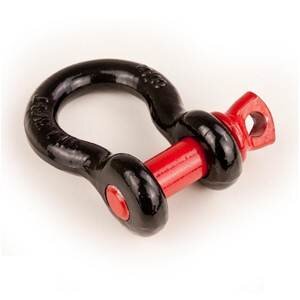I would fully agree, D shackles can distort quite easily, unless you are using one that is MASSIVELY oversized for the job in hand. I have used them a lot over the years attached to chains moving machinery/scrap and they are not as undeformable as you think. Actually in my opinion 'D' shackles are the worst pieces of sh1te going.
More importantly from a safety perspective for 'towbar recoveries' in a 4x4 response situation, I have seen ball hitches of the type found on cars that have bent very easily. As in they have distorted whilst towing (admittedly over their recommended weight), never mind recovering. I don't have a picture, but you know the type I mean, note the bolt on to a plate old type, the longer ones that 'disappear' under the bumper. Actually the type you see on a VW Passat if that's any help.
And when I say distort I mean bent 30 degrees out of line, which can't be good.








